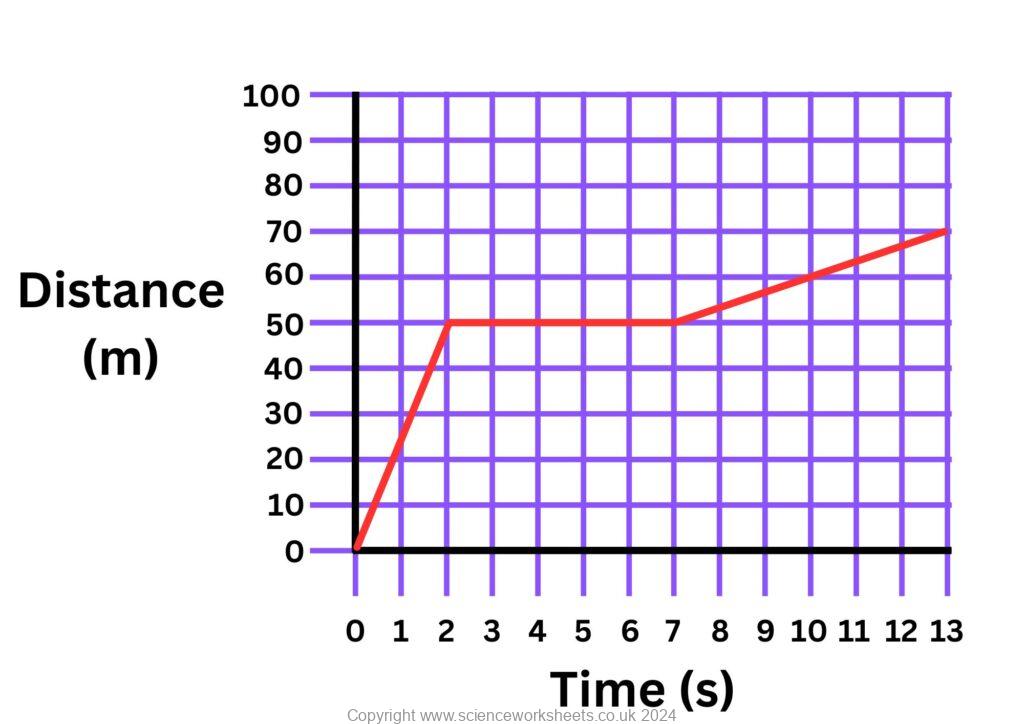Answers to AQA GCSE Distance-time graphs(physics)
Practice Questions
1.How can you find the speed of an object using a distance time graph
The gradient of the distance time graph is the speed.
2. Analyse the distance time graph below and answer the following questions.

A car was driven a short distance then stopped for a brief period, before driving for a further distance to complete its journey. Use the distance time graph above to answer the following questions
2a. How far did the car travel in the first 2 seconds
50m
2b. How long was the car stationary for
7 seconds – 2 seconds = 5 seconds
2c. During which time period was the car moving at the fastest speed?
0-2 seconds as the gradient has the steepest line
2d. Calculate the speed of the car between 0 to 2 seconds
50m/2seconds = 25m/s
2e. Calculate the speed of the car between 7 to 13 seconds.
Total distance travelled = 70m-50m =20m
Total time period = 13 seconds – 7 seconds = 6 seconds
Speed = 20m/6 seconds = 3.3 m/s
Speed = 3m/s
Absorption and Emission of EM Radiation
JJ Thomson and Plum pudding model
Ernest Rutherford and the Nuclear Model
Niels Bohr changing the Nuclear Model
Discovering the Proton and Neutron
Measuring radiation from radioactivity
Radiation types and properties
Random nature of radioactive decay
Radioactive contamination or irradiation
Hazards of contamination and irradiation
Studies on the effects of radiation on humans
Different half lives of radioactive isotopes
Nuclear Fission Chain Reaction
Writing nuclear fission equations
Drawing ray diagrams for a concave lens
Drawing Ray Diagram to produce a virtual image for a convex lens
Drawing ray diagram to produce a real image for a convex lens.
Specular and Diffuse Reflection
Seeing Coloured Objects Part 2
Viewing objects through coloured filters
Transparent, Translucent and Opaque